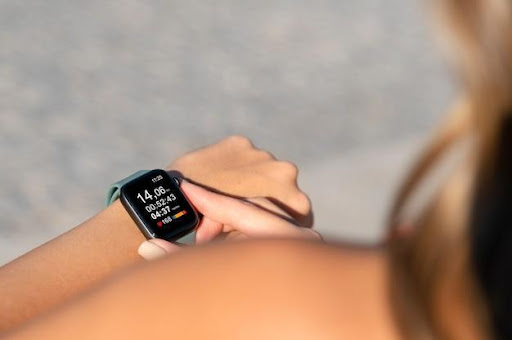To sign up for our daily email newsletter, CLICK HERE
How much do you know about an OLED smartwatch?
OLED (organic light-emitting diode) technologies are increasingly being used for displays in various smart electronics. Making the revenue growth faster, the global OLED revenues in 2022 are around $9.5million, and wearable OLED devices, including OLED smartwatches, take up the second largest of this revenue. Strong commercialization for electronics and semiconductor firms has been supported by a surging global market for smartwatches and smartphones with OLED displays.
Today, let’s dive into the world of OLED watches and learn how they are different from conventional smartwatches.
What is an OLED Smartwatch?
An OLED smartwatch is a wearable computer in the form of a watch. Modern OLED smartwatches provide a slender, bright, and power-efficient display screen with a touchscreen interface and are associated with a smartphone app. Such efficient small-screen smartwatches are perfect for easy access to your urgent mobile tasks.
Compared to LCD, OLED Smartwatches are more power-efficient. They don’t need battery-draining backlights to function as the crystals produce light by themselves. Even though they are comparatively expensive, their accessibility feature has led quality-conscious brands like Apple to immediately integrate this technology into their newly designed smartwatches.

OLED Smartwatch Vs. LCD Smartwatch
Now, let’s compare an OLED smartwatch with a traditional LCD smartwatch.
1. OLED Smartwatch Offers Higher Contrast
Maximizing contrast yields more realistic pictures with brighter highlights and darker shadows. The traditional liquid crystal displays (LCDs) have a lower contrast ratio, whereas OLED devices offer extraordinary contrast ratios, thus giving an exceptional high dynamic range (HDR) experience.
In smartwatches, display matters the most. The end-user needs to have a moderately brightened display light with good results. OLEDs technically have limitless contrast ratios to provide smartwatch users with a better experience.
2. More Energy Saving
In the case of LCDs, there is more energy consumption due to the usage of backlights. The higher the brightness, the more energy will be utilized.
On the other hand, OLED is the clear winner due to its lower consumption. The latest smartwatches are now bringing the feature of streaming Netflix or YouTube, requiring great energy. However, OLED’s self-producing light technology takes way less power than a traditional LCD.
3. Thinner Size & Lighter Weight
OLEDs are significantly thinner than traditional displays (0.15 to 2.5 mm), allowing for smaller and more space-efficient products.
An OLED has smaller, lighter, and more flexible plastic as well as organic layers in contrast to LCDs which are made of two glass substrates coated with a transparent conductor and a thin coating of liquid crystal material between 5 and 10 micrometers thick.
4. Better Picture Quality
When it comes to picture quality, OLED devices take the crown. Dynamic range is a feature that all OLED smartwatches offer, but less expensive LCDs, especially those without local dimming backlights, do not.
So, go for the OLED if you want to view HDR video in its brilliant, dynamic magnificence. Despite LCD’s edge in brightness, it triumphs due to its higher contrast and lack of blooming.
OLED smartwatches are the best choice since they have flawless blacks, excellent viewing angles, limitless contrast ratios, and improved motion quality!

5. An OLED Smartwatch has Better Viewing Angle.
The performance of the display screen is affected by the angle and distance. One of the key drawbacks of LCD screens is a change in picture quality if you are not looking at the LCD screen directly from the front. In-plane switching (IPS) panels, which are used in a few LCDs, have superior off-axis picture quality to other LCD types but don’t have the same visual appeal as OLEDs.
OLED doesn’t have the off-axis problem that LCDs do; its image seems nearly the same even at oblique angles. This makes it perfect for them to be incorporated into smartwatches. Any smartwatch wearer would naturally view it from various angles rather than holding it directly in front of their eyes.
6. Flexibility
Smartwatches with OLED displays are indeed very flexible. Its pixels can change modes surprisingly quickly because they combine the light source and the color into a single diode. LCD shutters are inherently slower to react to state changes than LEDs, whose brightness may be altered instantly.
OLED now boasts the fastest response time of any display technology in use, thanks to its great flexibility features.

0.49” FET OLED Screen is the Best Fit for an OLED Smartwatch
All the features mentioned above remain strongly intact and durable for a longer period if the OLED screens are made of high-quality material. The product quality can make it last just for days or years, which is why you should get your hands on the FET’s high-quality 0.49” FET small OLED screen. Its high-resolution result, power-saving, and lighter weight will make your finished product stand out from the rest.
The small OLED display offers lifelike color reproduction with wide viewing angles and high contrast, which make it perfect for Mobile phones, smart homes, watches, smart bracelets, electronic cigarettes, medical equipment, and electric toothbrushes,
About FET
Since its inception in 2010, Forfuture Electron Technology Co., Limited (FET) has had a significant presence in the optoelectronic display market. It is a developing high-tech company that combines R&D, production, and sales, with the single goal of manufacturing higher-quality products.